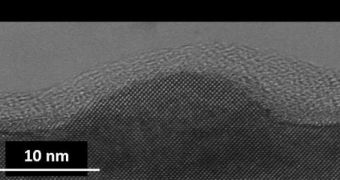Experts from the University of Sheffield, in the UK, the Ecole Normale Superieure, in Paris, France, and the Forschungszentrum Dresden-Rossendorf, in Germany, have recently developed a new type of quantum dot, which is finally able to confirm a long-standing, but never verified theory. The idea states that electrons trapped in such structures live for much longer than other electrons – as in take longer to revert to their ground state once they have been excited – because they have very few ways of losing their energies. While this has been inferred for quite some time now, actually proving the concept has remained an elusive goal for science, until now, AlphaGalileo reports.
Experts have also wondered why the trapping of electrons was never recorded via observation methods. The explanation for that might be that the well-known theory describing the loss of energy of electrons to lattice vibrations (phonons) is not applicable to quantum dots, because of the strong confinement of the electrons. They couple with phonons, and give birth to strongly coupled structures called polarons.
The main achievement of the latest research effort was creating a quantum dot whose properties allowed for the rigid analysis of the electrons within, through existing scientific methods. Essentially, the energy level separations in the new structure are significantly smaller than the energy of the most important lattice vibration. This enabled the team to observe that the life of electrons varied by factors of 1,000 for an energy separation that only varied by a factor of two.
In order to make the measurements, the experts used a free-electron laser (FEL), which is a unique type of short-pulse terahertz laser. The machine can generate high-intensity infrared and terahertz pulses over a wide range of wavelengths, which enables science teams to get a multi-angled view of what is going on inside the quantum dot. The structure is only 1,000 to 10,000 atoms large, which means that quantum effects take precedence over other theories. The work was funded through a European Union (EU) transnational access program.

 14 DAY TRIAL //
14 DAY TRIAL //